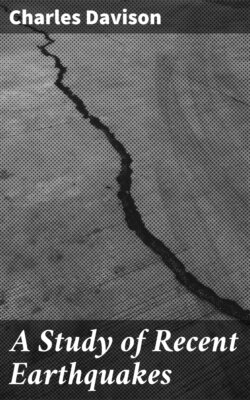Читать книгу A Study of Recent Earthquakes - Charles Davison - Страница 21
На сайте Литреса книга снята с продажи.
VELOCITY OF THE EARTH-WAVES.
ОглавлениеIn 1857 little was known about the velocity of earthquake-waves. Experiments had been made by Mallet himself in 1849 in the neighbourhood of Dublin. These gave 825 feet per second for the velocity in dense wet sand, 1,306 feet per second in discontinuous granite, and 1,665 feet per second in more solid granite.[20] The only earthquake for which the velocity had been calculated was the Rhenish earthquake of 1846, the value ascertained by Schmidt being 1,376 French feet, or 1,466 English feet, per second.
The accurate public measurement of time, which, as Mallet remarks, is one of the surest indications of advancing civilisation, was, however, unknown in the kingdom of Naples; and his attempt was therefore fettered by the rarity of precise estimates of the time of occurrence. Throughout the whole disturbed area only six good records could be obtained, and three of these (at Vietri di Potenza, Atella, and Naples) were derived from stopped clocks, witnesses of rather doubtful value. At Montefermo and Barielle the time was at once read from a watch, and at Melfi from an accurate pocket chronometer. The times given vary from 9h. 59m. 16s. P.M. (Naples mean time) at Vietri di Potenza to 10h. 7m. 44s. at Naples. Allowing for the supposed change of direction by refraction at the Monte St. Angelo range on the way to Naples, Mallet finds the mean surface velocity to be 787 feet per second. Omitting the Naples record, and taking account of the calculated depth of the focus, the mean velocity becomes 804 feet per second.
